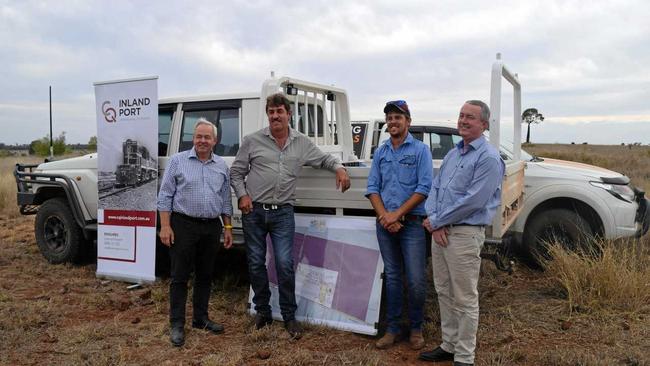Get aboard grain train
GrainCorp chief executive officer Mark Palmquist inspected the site of the $18.5million investment as part of the Central Queensland Inland Port development.

Central Queensland
Don't miss out on the headlines from Central Queensland. Followed categories will be added to My News.
AFTER announcing the $18.5million investment as part of the Central Queensland Inland Port development earlier this year, GrainCorp chief executive officer Mark Palmquist inspected the site this week.
The inspection of the new grain handling facility near Emerald came ahead of its planned development next month.
"I wanted to see it from end to end on the supply chain,” Mr Palmquist said.
"We started at the export facility in Gladstone and worked our way up to Yamala, so I get the opportunity to see the paddocks and understand the distance of the line of production.”
Working with AgForce and Central Queensland Inland Port Development, GrainCorp will be the first to operate in what is hoped to be an agricultural business hub.
The facility will use the only railway line running east-west in Queensland, which has the capacity to transport all forms of products.
Mr Palmquist said the project, set to be fully operational by September next year, would give farmers 180,000tonnes of storage and really good, stable transportation.
"It's giving the volume, capacity and need for the volatility in grain production from year to year.
"We work with the farmers to give them access to the marketplace and this will create an efficient way to do that,” Mr Palmquist said.
"Our goal is not to be owning land and getting into farm production - we think farmers are really good at that - but to try and support them by getting them access to the market and a competitive supply chain.”
By using the 20-tonne axle loading railway line, MrPalmquist said the project would allow for a time reduction in grain transport while removing a large portion of the trucks used.
"From the time we start loading here in Yamala, the train will be back here, empty, in 24 hours - half the time it takes now.
"It will take a lot of the trucks off the road, which is a safety issue but also a long-term issue with the infrastructure of roads.
"Seventy per cent of grain is being moved by truck and only 30% by rail. We are hoping to turn that figure around.”
Central Queensland Inland Port Development managing director Alan Stent-Smith said the next step in the port production would be to create intermodal facilities for containerisation, bringing a range of opportunities for the region.
"This will allow a range of products to come in and go out, which could potentially move manufacturing plants from any industry out to the region,” Mr Stent-Smith said.
"Business brings people. Ifyou can get your material into an area efficiently, if you've got a good workforce base, utilise the infrastructure like schools, then it's a good place for people to live and work.”


